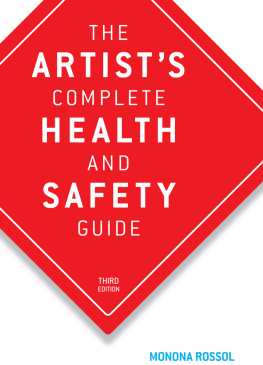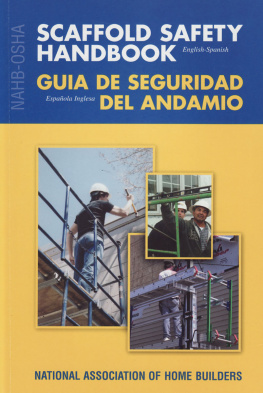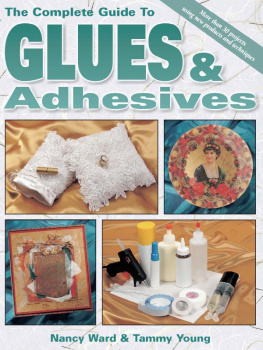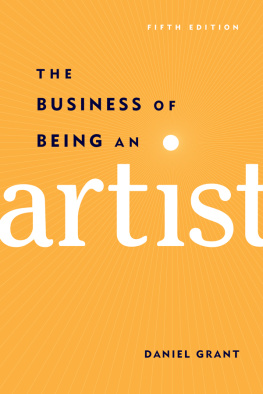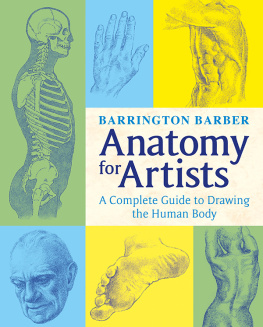
THE
ARTISTS
COMPLETE
HEALTH
AND
SAFETY
GUIDE
BY
MONONA ROSSOL

Copyright 2001, 2012 by Monona Rossol
All rights reserved. Copyright under Berne Copyright Convention, Universal Copyright Convention, and Pan American Copyright Convention. No part of this book may be reproduced, stored in a retrieval system, or transmitted in any form, or by any means, electronic, mechanical, photocopying, recording or otherwise, without the express written consent of the publisher, except in the case of brief excerpts in critical reviews or articles. All inquiries should be addressed to Allworth Press, 307 West 36th Street, 11th Floor, New York, NY 10018.
Allworth Press books may be purchased in bulk at special discounts for sales promotion, corporate gifts, fund-raising, or educational purposes. Special editions can also be created to specifications. For details, contact the Special Sales Department, Allworth Press, 307 West 36th Street, 11th Floor, New York, NY 10018 or .
15 14 13 12 11 5 4 3 2 1
Copublished with the Graphic Artists Guild
Published by Allworth Press, an imprint of Skyhorse Publishing, Inc.
307 West 36th Street, 11th Floor, New York, NY 10018.
Copublished with the Graphic Artists Guild
Allworth Press is a registered trademark of Skyhorse Publishing, Inc., a Delaware corporation.
www.allworth.com
Cover and Interior Design by Jelly Associates, NYC
Page composition/typography by SR Desktop Services, Ridge, NY
eISBN: 978-1-58115-992-9
Library of Congress Cataloging-in-Publication Data
Rossol, Monona.
The artists complete health and safety guide / by Monona Rossol.3rd ed.
p. cm.
Includes bibliographical references and index.
ISBN 1-58115-204-3
1. ArtistsHealth and hygieneHandbooks, manuals, etc. 2. Artists materials Safety measuresHandbooks, manuals, etc. 3. Artists materials ToxicologyHandbooks, manuals, etc. I. Title.
RC963.6.A78 R67 2001
This book was written to provide the most current and accurate information about health and safety hazards in the arts and about applicable laws and regulations. However, the author and publisher can take no responsibility for any harm or damage that might be caused by the use or misuse of any information contained herein. It is not the purpose of this book to provide medical diagnosis, suggest health treatment, or provide legal or regulatory counseling. Readers should seek advice from physicians, safety professionals, industrial hygienists, environmental health specialists, and attorneys concerning specific problems
DEDICATION
To John S. Fairlie and the vast Fairlie clan to which I belong.
ACKNOWLEDGMENTS
There are so many professional friends and colleagues I would like to thank, but the list is far too long. Instead, I will mention only a crucial few. First, always is Jack Holzhueter, who labored long to teach me to write. Next, my thanks to Ted Rickard at the Ontario College of the Arts for his help on the Canadian regulations, and to Tad Crawford, who knows how to spur a writer along without puncturing the ego.
My thanks goes also to the Board of ACTS (Arts, Crafts and Theater Safety), Susan Shaw, Eric Gertner, Nina Yahr, Elizabeth Northrop, Tobi Zausner, and Diana Bryan for sharing their expertise and encouragement. And my deepest gratitude goes to Tom Armino, who gave me the idea of starting ACTS, set up our accounting system, and served on our board until his death in 1988.
LIST OF TABLES AND FIGURES
FIGURES
PREFACE
The idea for this book can be traced back to the University of Wisconsin, where I earned a B.S. in chemistry. I was working and teaching in the chemistry department when I decided to enter the graduate art program. As I went back and forth between the chemistry and art schools, it occurred to me that many of the same acids and other chemicals were used in both places.
As a research chemist, I defended myself against chemicals with goggles, gloves, fume hoods, and other safety equipment. My art colleagues and I, on the other hand, saw these same chemicals as art materials that were to be used lovingly and intimately. As I look back at our work practices now, I think we must have confused exposure to art with exposure to art materials.
My first writings on art hazards were graduate school seminar and term papers in the early 1960s. They were not well received. My classmates and teachers told me bluntly that this kind of information interfered with their creativity. Unfortunately, illness and death also interfere with creativity, so I persisted.
I continued to include health hazard information in my teaching. However, it was only a love labor until 1974, when I received a grand sum of $300 for writing a ceramic studio evaluation and consultation report on toxic ceramic kiln gases.
I have since done many more important things in the art hazards field, but that first consultation had the greatest effect on me. It led me to believe that I could do something for art besides trying to be a good potter and teacher. And because the consultation was for a cerebral palsy center, it greatly affected my thinking about the disabled artists special health and safety problems.
The books subject is necessarily technical, and you may find you have questions or need additional information. There are data in this book for which I expected some people would want proof. In these cases, I have cited references. These footnotes do not always appear in a consistent footnote format, but each should provide precisely the correct information to assist the reader in accessing the source of that data. In addition, I have made arrangements for readers to be able to reach me personally at:
Arts, Crafts, and Theater Safety (ACTS)
181 Thompson Street, #23
New York, New York 10012
Telephone: (212) 777-0062
E-mail:
ACTS is a not-for-profit corporation dedicated to providing a variety of health and safety services for artists. I already answer thousands of requests for information at ACTS every year and would be proud to hear from you. In fact, the comments and questions from artists served as a guide for the material covered in this book. My thanks to you all.
Monona Rossol, M.S., M.F.A., Industrial Hygienist
PART I
THE REGULATED
ART WORLD
Safety laws and common sense both dictate that we understand the hazards of the materials we use and the precautions we must take to work safely. Subjects in which we must be versed include:
Health and Safety Laws
Health Hazards and the Body
Chemical Hazards
Physical Hazards
How to Identify Hazardous Materials
General Precautions
Ventilation
Respiratory Protection
CHAPTER 1
HEALTH AND SAFETY LAWS
As artists and teachers, most of us believe our creative work must be free, uninhibited, and independent. Actually, it is encumbered by a host of laws and regulations.
For example, fire, health, and safety laws affect how we must design our studios and what we can teach in our classrooms. And environmental protection laws limit the kinds of art materials available to us, as well as how we must store, use, and dispose of them. These laws apply to us, because many materials used in art contain substances that now are known to be both toxic and hazardous to the environment. By using these materials improperly, we risk our health and pollute our world just as industry does. While we each may use much smaller amounts of chemicals than industry, there are so many of us.
Next page
